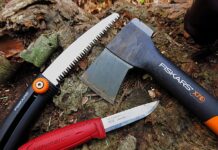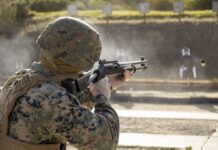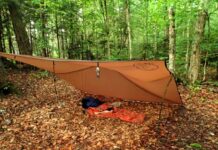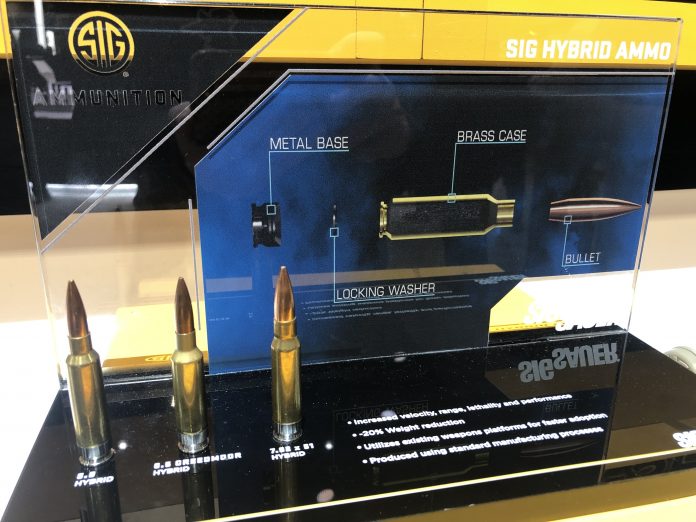
Hybrid: Mix, Blend, Amalgamation
Sig Sauer’s new Hybrid Ammunition is born of their NGSW development and parallel DoD requests to make ammunition lighter. By mixing materials and putting them where they would be most useful Sig has come up with a very simple solution to several problems. Three, to be precise.
Problem 1. Weight
One of the requirements within the NGSW, and listed in several solicitations and goals from the Department of Defense, was to lighten the ammunition by 20% over legacy brass systems. Other companies have taken this challenge and radically changed material composition to accomplish this.
Sig, very simply, just used less brass. The complex geometry of the base of a solid brass case is what necessitates the brass thickness of ‘normal’ pistol and rifle brass. Forming just the cylindrical/conical portion of the case out of brass makes for a thinner wall on the hybrid. Thinner wall equals less weight. The brass itself doesn’t have a thickness requirement for strength, it’s supported under pressure by the steel chamber wall. As long as the case wall material (the brass) doesn’t deform during chambering it will be fine.
Problem 2. Case Durability
The most likely part of a case to take damage during firing is the base. The rim, where the extractor claw is twisting on it and ripping it out of the chamber, is subject to an array of changing forces.
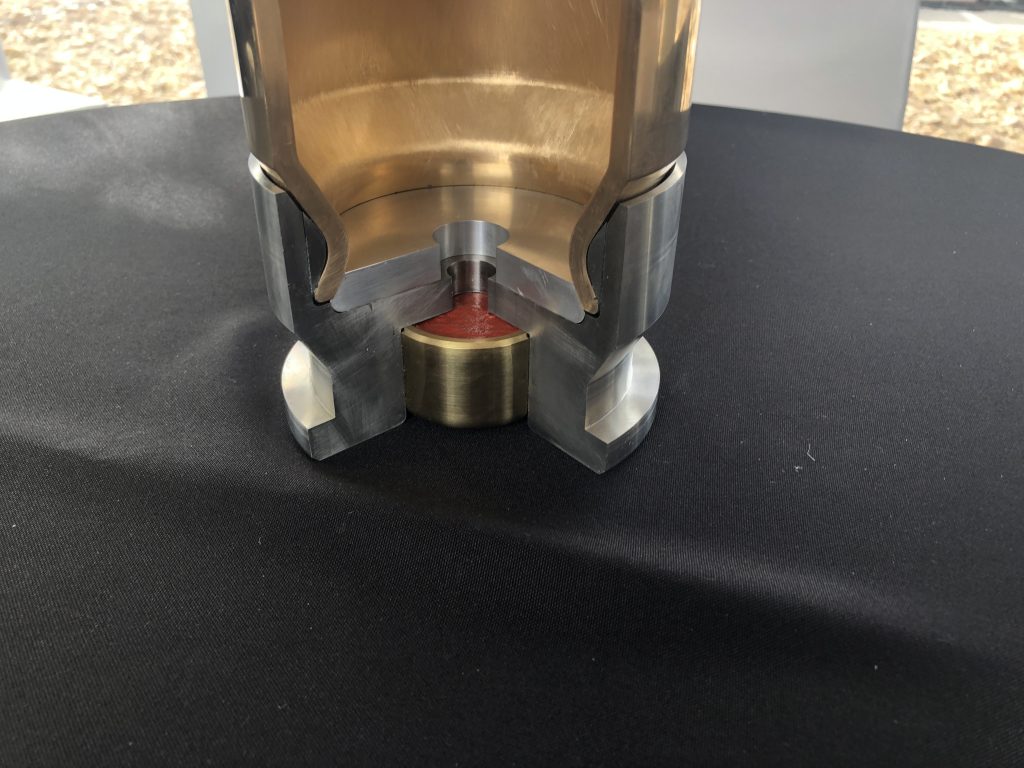
Brass can and does occasionally rip under these stress. Stainless steel was chosen by Sig to drastically reduce that possibility. The brass wall still provides the hybrid with the advantages it has under heat and pressure with its elasticity. The stainless provides the durable base that’s getting yanked around by the extractor. The washer inside seals the two together, a seal that strengthens under pressure.
Simple. But for the reloader crowd, sorry… one time use.
Problem 3. Cartridge Power
The final and primary goal of the NGSW ammo selection was Overmatch, a buzzword that pretty much means shoot further effectively.
To do that the US Army selected a 6.8mm round with a superior ballistic profile to 5.56 and 7.62. It will fly better than both increase mathematical effective range of troops equipped with it. We’re essentially going back to a battle rifle concept but forward in precision tolerances and listening to people who know what they’re talking about ballistically.
Sig again to an easy practical solution to this problem. Thinner brass walls gives them more internal capacity for the powder charge behind a lighter narrower projectile that flies better. They choose a powder that’s optimized for the shorter barrels (13″) and will generate the range and energy they want.
With that blank slate, the NGSW solicitation gave them freedom of movement. They weren’t limited to 5.56 so they engineered simple solutions to tackle simple problems (when not restrained by the limitations of a chambering). They did work with widely available and proven hardware in the 7.62×51 dimensions and on a successful operating system, the MCX.
That rifle is going to feel and operate like the M4, a factor I cannot overstate the value of since it is an international standard service weapon.
But back to the ammunition.
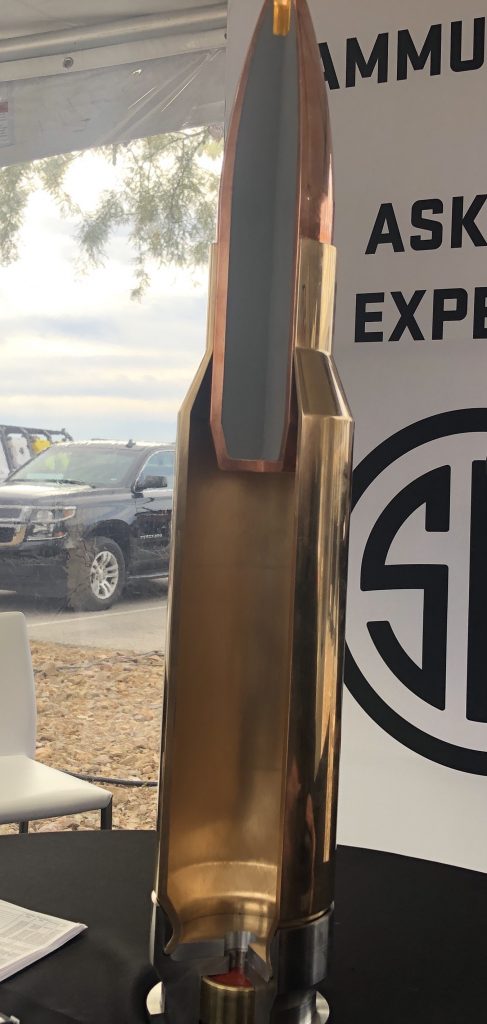
Sig’s Hybrid ammunition is a materially simple solution that will allow us to play with rounds in a new pressure and velocity category. Will it help them win NGSW? We will see. The USMC just picked up poly-cased .50 BMG but .50 has always been a whole different animal. Could we see a similar format with a polymer case wall? Again, maybe.
The brilliance with Sig’s whole NGSW solution is working new ways with known quantities, all because a few key restrictions were removed.

